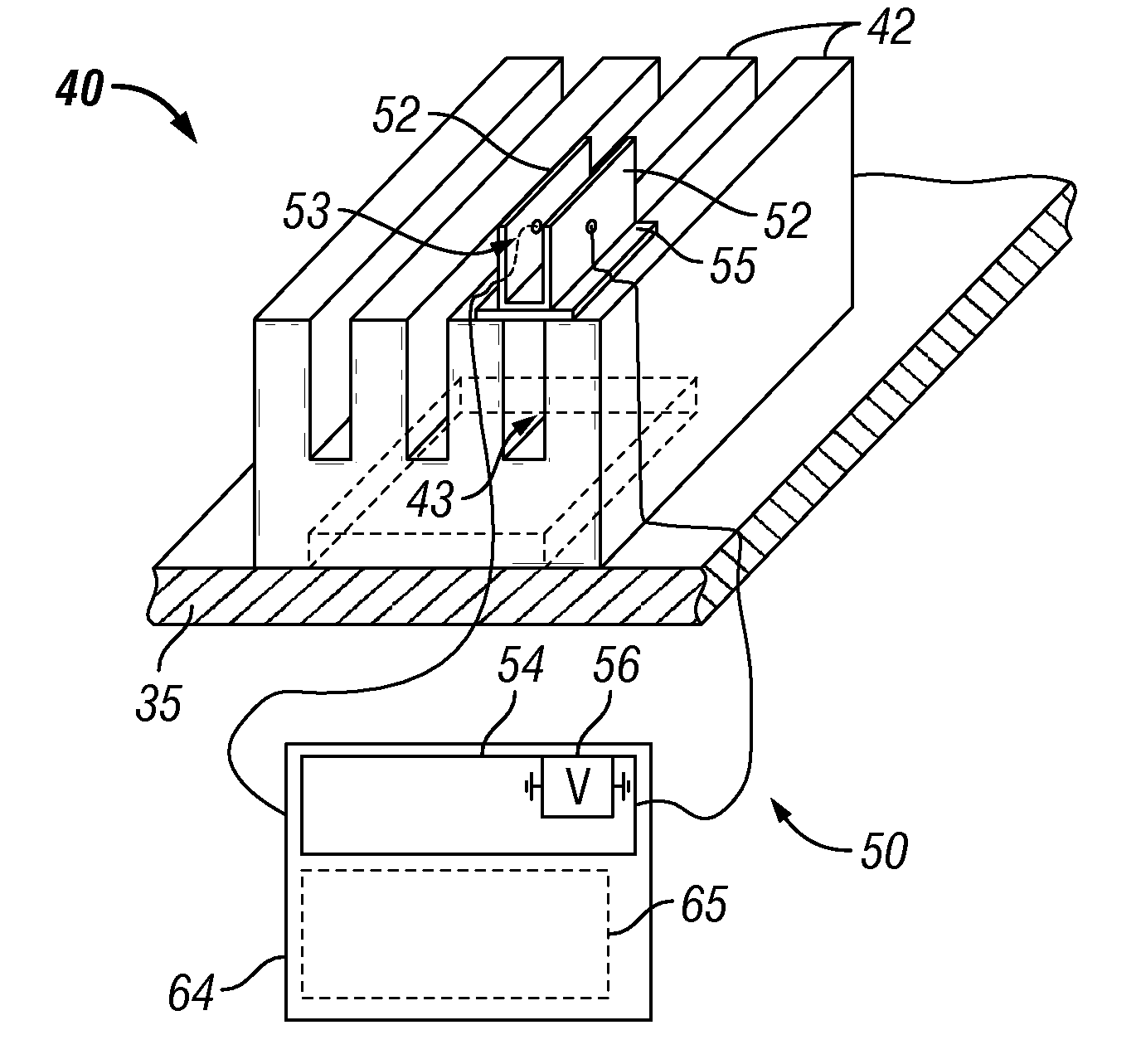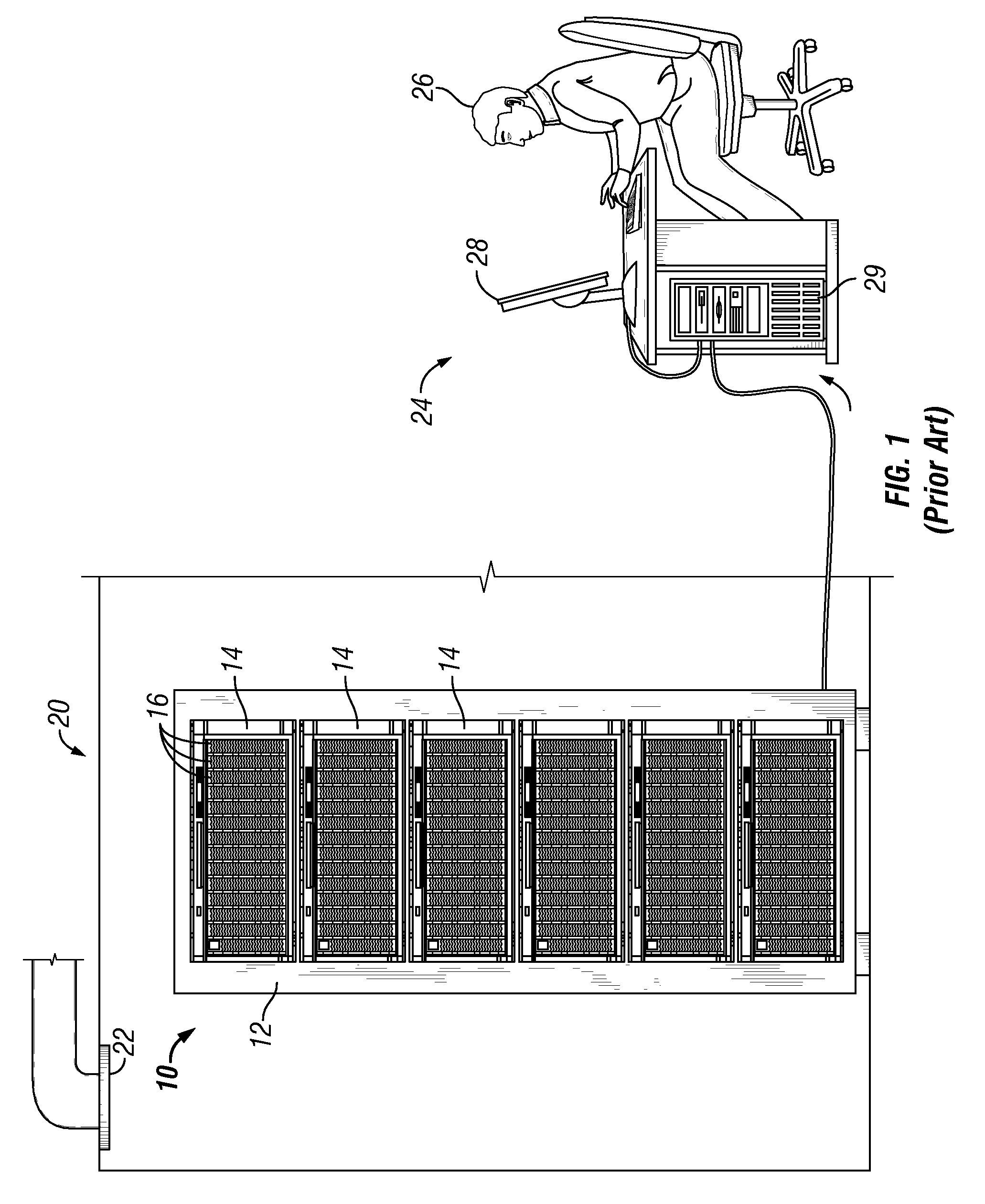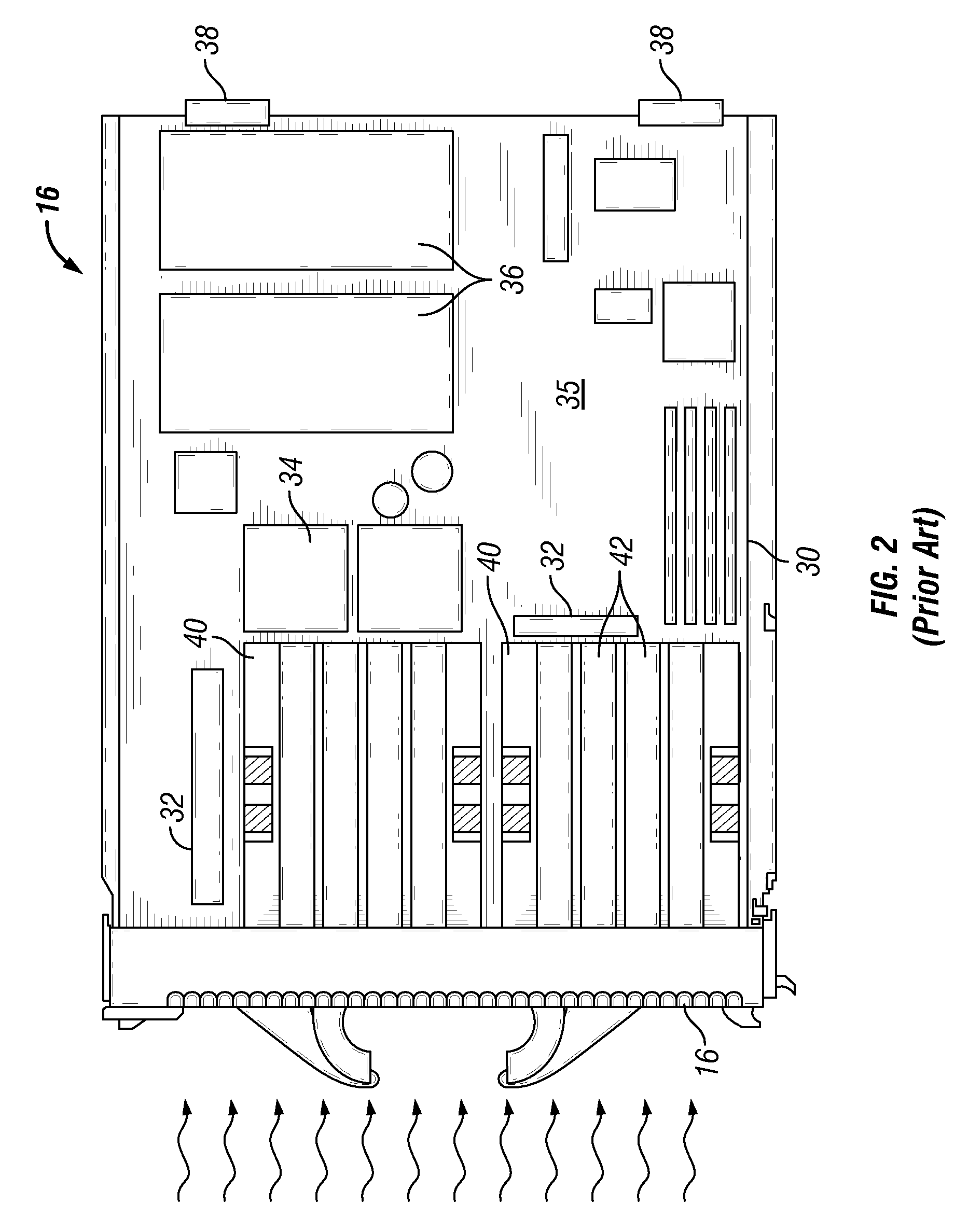Capacitive detection of dust accumulation in a heat sink
a heat sink and capacitive technology, applied in the direction of resistance/reactance/impedence, instruments, material analysis, etc., can solve the problems of increasing the amount and rate of dust deposited, the airflow used to cool the computer carries some amount of dust, and the problem of problems in the computer system
- Summary
- Abstract
- Description
- Claims
- Application Information
AI Technical Summary
Problems solved by technology
Method used
Image
Examples
Embodiment Construction
[0020]The present invention provides a system and method for electronically detecting the presence of dust within a computer system using a capacitive sensor responsive to the accumulation of dust. The dust detection system may be implemented in a smaller computer, such as an individual PC, or in a more expansive system, such as a rack-based server system (“rack system”) having multiple blade servers and other hardware devices. In one embodiment, each blade server in a rack system detects the internal accumulation of dust within the blade server and generates an alert when the accumulation of dust has reached a certain level. The alerts may be received by a management console for the attention of a system administrator. Each alert may contain the identity of the blade server generating the alert, so that the system administrator knows which blade server(s) need to be cleaned. Identifying blade servers or other components that have an accumulation of dust results in tremendous saving...
PUM
 Login to View More
Login to View More Abstract
Description
Claims
Application Information
 Login to View More
Login to View More - R&D
- Intellectual Property
- Life Sciences
- Materials
- Tech Scout
- Unparalleled Data Quality
- Higher Quality Content
- 60% Fewer Hallucinations
Browse by: Latest US Patents, China's latest patents, Technical Efficacy Thesaurus, Application Domain, Technology Topic, Popular Technical Reports.
© 2025 PatSnap. All rights reserved.Legal|Privacy policy|Modern Slavery Act Transparency Statement|Sitemap|About US| Contact US: help@patsnap.com



